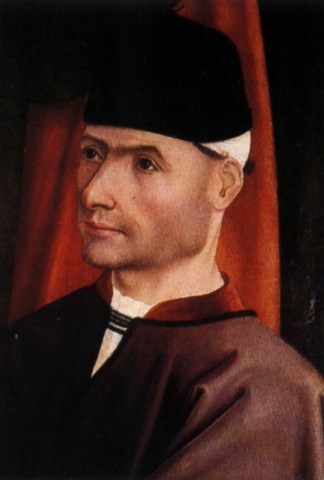|
Quentin Durward (TV Series)
''Quentin Durward'' is a French-German swashbuckler TV series. It was produced in 1970, directed by Gilles Grangier and broadcast in 1971. The series starred the German actor Amadeus August as the protagonist and the French actress Marie-France Boyer as Isabelle de Croye. The series was based on Sir Walter Scott's in 1823 published novel ''Quentin Durward''. It concerns a Scottish soldier who serves French King Louis XI (1423-1483) while the King has to overcome the schemes of his rival Charles the Bold and Jean Balue. The TV series kept close to the classic novel and was often shot at historic French locations. The French version consists of 7 instalments of 52 minutes each, while the dubbed German version had 13 episodes of about 25 minutes apiece. Both versions have been made available on DVD. Storyline In a monastery in Scotland on the day of an ordination to the priesthood, Quentin Durward, a dashing young man of noble background, is about to be consecrated. The monks besee ... [...More Info...] [...Related Items...] OR: [Wikipedia] [Google] [Baidu] |
Adventure
An adventure is an exciting experience or undertaking that is typically bold, sometimes risky. Adventures may be activities with danger such as traveling, exploring, skydiving, mountain climbing, scuba diving, river rafting, or other extreme sports. Adventures are often undertaken to create psychological arousal or in order to achieve a greater goal, such as the pursuit of knowledge that can only be obtained by such activities. Motivation Adventurous experiences create psychological arousal, which can be interpreted as negative (e.g. fear) or positive (e.g. flow (psychology), flow). For some people, adventure becomes a major pursuit in and of itself. According to adventurer André Malraux, in his ''Man's Fate'' (1933), "If a man is not ready to risk his life, where is his dignity?". Similarly, Helen Keller stated that "Life is either a daring adventure or nothing." Outdoor adventurous activities are typically undertaken for the purposes of recreation or wikt:excitement, excite ... [...More Info...] [...Related Items...] OR: [Wikipedia] [Google] [Baidu] |
Feud
A feud , referred to in more extreme cases as a blood feud, vendetta, faida, clan war, gang war, or private war, is a long-running argument or fight, often between social groups of people, especially families or clans. Feuds begin because one party perceives itself to have been attacked, insulted, injured, or otherwise wronged by another. Intense feelings of resentment trigger an initial retribution, which causes the other party to feel greatly aggrieved and vengeful. The dispute is subsequently fuelled by a long-running cycle of retaliatory violence. This continual cycle of provocation and retaliation usually makes it extremely difficult to end the feud peacefully. Feuds can persist for generations and may result in extreme acts of violence. They can be interpreted as an extreme outgrowth of social relations based in family honor. Until the early modern period, feuds were considered legitimate legal instruments and were regulated to some degree. For example, Montenegrin cultur ... [...More Info...] [...Related Items...] OR: [Wikipedia] [Google] [Baidu] |
André Valmy
André Valmy (8 October 1919 – 18 November 2015) was a French film actor. He was born André Antoine Marius Dugenet in the 14th arrondissement of Paris. He appeared in more than 60 films between 1940 and 2001. He is also known in France to be the dubbed voice of Walter Matthau, Robert Shaw and George Kennedy. Selected filmography * ''Après Mein Kampf mes crimes'' (1940) - Ernst * '' Mademoiselle Béatrice'' (1943) - (uncredited) * '' I Am with You'' (1943) - Le gérant de l'hôtel * ''L'aventure est au coin de la rue'' (1944) - Etienne * ''Le jugement dernier'' (1945) * ''Les démons de l'aube'' (1946) - Serge Duhamel * ''Nuit sans fin'' (1947) - Olivier * ''Le beau voyage'' (1947) * ''Le cavalier de Croix-Mort'' (1948) - Coco-Latour * ''Carrefour du crime'' (1948) - Jacques Marchand * ''Une si jolie petite plage'' (1949) - Georges * ''Manon'' (1949) - Lieutenant Besnard / Bandit Chief * ''Marlene'' (1949) - Laurin * ''Mission in Tangier'' (1949) - Beaudoit * ''Les eaux ... [...More Info...] [...Related Items...] OR: [Wikipedia] [Google] [Baidu] |
Jean De Dunois
Jean d'Orléans, Count of Dunois (23 November 1402 – 24 November 1468), known as the "Bastard of Orléans" (french: bâtard d'Orléans) or simply Jean de Dunois, was a French military leader during the Hundred Years' War who participated in military campaigns with Joan of Arc. His nickname, the "Bastard of Orléans", was a mark of his high status, since it acknowledged him as a first cousin to the king and acting head of a cadet branch of the royal family during his half-brother's captivity. In 1439 he received the county of Dunois from his half-brother Charles, Duke of Orléans, and later king Charles VII made him count of Longueville. Life Jean was the illegitimate son of Louis I, Duke of Orléans – son of King Charles V of France – and his mistress Mariette d'Enghien. In 1407, Jean's father, Louis I, Duke of Orléans was assassinated. Eight years later, his half-brother, Charles, Duke of Orléans was captured at the Battle of Agincourt and remained a prisoner of t ... [...More Info...] [...Related Items...] OR: [Wikipedia] [Google] [Baidu] |
Roger Pigaut
Roger Pigaut (birth name Roger Paul Louis Pigot) (8 April 1919 – 24 December 1989) was a French actor and film director. He appeared in 40 films between 1943 and 1980. Partial filmography * ''Retour de flamme'' (1943) - Maurice * '' Love Story'' (1943) - Fabien Marani * ''Twilight'' (1944) - Petit rôle (uncredited) * ''The Eleventh Hour Guest'' (1945) - Le docteur Rémi Lambert * '' The Bellman'' (1945) - Pierre * '' The Murderer is Not Guilty'' (1946) - Roger Pigaut (uncredited) * ''The Sea Rose'' (1946) - Jérôme * '' Night Warning'' (1946) - Pierre * ''The Bouquinquant Brothers'' (1947) - Pierre Bouquinquant * ''Antoine and Antoinette'' (1947) - Antoine Moulin * ''Les condamnés'' (1948) - Le docteur Auburtin * '' Night Express'' (1948) - Robert * ''Bagarres'' (1948) - Antoine * ''Vire-vent'' (1949) - Paul Chapus * '' Cartouche, King of Paris'' (1950) - Louis Dominique Bourguignon dit Cartouche * ''Un sourire dans la tempête'' (1950) - Francois Mercier * ''La peau d ... [...More Info...] [...Related Items...] OR: [Wikipedia] [Google] [Baidu] |
Château De Montpoupon
The Château de Montpoupon (pronounced �ɑto də mɔ̃pupɔ̃ is a castle in the ''commune'' of Céré-la-Ronde in the Indre-et-Loire ''département'' of France. It is located to the east of Tours, 10 km south of Montrichard in a forested valley. History Originally a mediaeval fortress, the castle was altered by the lords of Prie and Buzançais. The postern was constructed in the 16th century. Since the middle of 19th century, the castle has belonged to the Motte Saint Pierre family. It houses one of the four French museums dedicated to hunting with dogs. It has been listed since 1930 as a '' monument historique'' by the French Ministry of Culture. See also *List of castles in France This is a list of castles in France, arranged by Region and Department. ;Notes: # The French word ''château'' has a wider meaning than the English ''castle'': it includes architectural entities that are properly called palaces, mansions or vine ... References External links * * ... [...More Info...] [...Related Items...] OR: [Wikipedia] [Google] [Baidu] |
Cité De Carcassonne
The Cité de Carcassonne ( ) is a medieval citadel located in the French city of Carcassonne, in the Aude department, Occitanie region. It is situated on a hill on the right bank of the River Aude, in the southeast part of the city proper. The citadel was restored at the end of the 19th century and in 1997 it was added to the UNESCO list of World Heritage Sites because of its exceptional testimony to the architecture and planning of a medieval fortress town. An image of the historic city of Carcassonne appears on the emblem of local rugby league team, AS Carcassonne. History Early history Founded during the Gallo-Roman period, the citadel derives its reputation from its long double surrounding walls interspersed by 52 towers. The town has about 2,500 years of history and has been occupied in different ages by Romans, Visigoths and Crusaders. At the beginning of its history it was a Gaulish settlement then in the 3rd century AD, the Romans decided to transform it into a fortifie ... [...More Info...] [...Related Items...] OR: [Wikipedia] [Google] [Baidu] |
Morienval
Morienval () is a commune in the Oise department in northern France. See also * Communes of the Oise department The following is a list of the 679 communes of the Oise department of France. The communes cooperate in the following intercommunalities (as of 2020):Communes of Oise {{Oise-geo-stub ... [...More Info...] [...Related Items...] OR: [Wikipedia] [Google] [Baidu] |
Arranged Marriage
Arranged marriage is a type of marital union where the bride and groom are primarily selected by individuals other than the couple themselves, particularly by family members such as the parents. In some cultures a professional matchmaker may be used to find a spouse for a young person. Arranged marriages have historically been prominent in many cultures. The practice remains common in many regions, notably South Asia, the Middle East, North Africa, and the Caucasus. In many other parts of the world, the practice has declined substantially during the 19th and 20th centuries. Forced marriages, practiced in some families, are condemned by the United Nations. The specific sub-category of forced child marriage is especially condemned. In other cultures, people mostly choose their own partner. History Arranged marriages were very common throughout the world until the 18th century. Typically, marriages were arranged by parents, grandparents or other close relatives and trusted friends. ... [...More Info...] [...Related Items...] OR: [Wikipedia] [Google] [Baidu] |
Kingdom Of Burgundy
Kingdom of Burgundy was a name given to various states located in Western Europe during the Middle Ages. The historical Burgundy correlates with the border area of France, Italy and Switzerland and includes the major modern cities of Geneva and Lyon. As a political entity, Burgundy existed in a number of forms with different boundaries, notably, when it was divided into Upper and Lower Burgundy and Provence. Two of the entities, the first around the 6th century and the second around the 11th century, were called the Kingdom of Burgundy. At other times were the Kingdom of Provence, the Duchy of Burgundy and the County of Burgundy. Kingdom of the Burgundians (411–534) Burgundy is named after a Germanic tribe of Burgundians who originated in mainland Scandinavia, then settled on the island of Bornholm, whose name in Old Norse was ''Burgundarholmr'' ("Island of the Burgundians"). From there they migrated south through Germanic lands into Roman Gaul and settled in the wester ... [...More Info...] [...Related Items...] OR: [Wikipedia] [Google] [Baidu] |
Scottish Guard
The Scottish Guards () was a bodyguard unit founded in 1418 by the House of Valois, Valois Charles VII of France, to be personal bodyguards to the French monarchy. They were assimilated into the ''Maison du Roi'' and later formed the first company of the ''Garde du Corps (France), Garde du Corps du Roi'' (Royal Bodyguard). In 1450, King James II of Scotland, James II sent a company of 24 noble Scots under the command of Patrick de Spens, son of his custodian. This company takes the name of or . On 31 August 1490, this company, these of Patry Folcart, Thomas Haliday and a part of the company of Robin Petitloch became the first company of under the command of Guillaume Stuier (Stuart). At the beginning ''la compagnie écossaise des gardes du corps du roi'' included 100 (25 bodyguards and 75 ). Each bodyguard had four men-at-arms under his command, (a squire, an archer, a Crossbow, cranequinier and a servant), one of them acquired the name of . They were finally disbanded in 183 ... [...More Info...] [...Related Items...] OR: [Wikipedia] [Google] [Baidu] |





